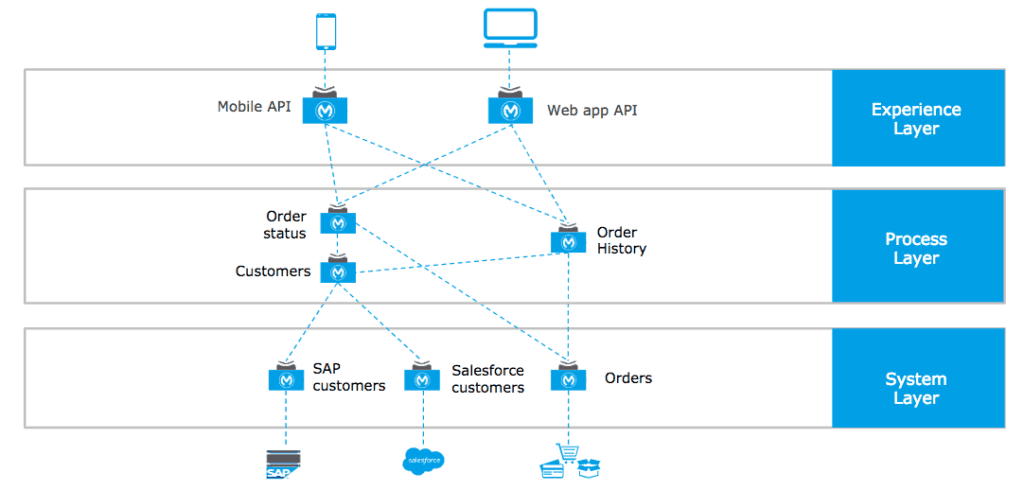These days, the entire shopper journey — from awareness and acquisition to transaction and service — has been completely disrupted.
Consider today’s consumer, who is always on the go and often on a mobile device. She may be inspired by a social media post or retargeted ad where she’s doing research on a product. Maybe then a chat window pops up where a customer service representative who helps her make a purchasing decision, where she promptly, with one tap, purchases with Apple Pay.
Retail isn’t just about the transaction anymore. It’s about the commerce experience. To the consumer, each element — marketing, shopping, customer service — is connected. To her, it’s all one experience, and she wants it to be fast, seamless, and easy.
The shopper’s journey is omnichannel
Take a look at these statistics:
- 85 percent of consumers research products across channels.
- 75 percent of consumers want personalized offers based on purchase history.
- 50 percent of digital sales are influenced by in-store interactions.
Omnichannel is more than connecting system A to system B to create a new mobile app or online channel. Omnichannel is about becoming channel agnostic and building a consistent user experience across every channel. And if there’s one thing the last decade has taught us, it’s that new channels and new ways of interacting with consumers emerge rapidly, and it’s critical to have the agility to embrace those channels.
And at the core of all of these use cases is integration. For example, inventory management requires integration with point-of-sale and order management systems.
While omnichannel presents exciting opportunities — Omnichannel customers are 41 percent more profitable — it’s crucial to execute the strategy well because 63 percent of customers would switch brands for a better connected experience
78% of executives say they lack a unified experience across channels
Unfortunately, we’ve seen companies struggle with these aspects to effectively realize an omnichannel strategy, with 78 percent of executives saying that they lack a unified omnichannel experience. As a result, for many customers, their experiences reflect the siloed architectures of the brands they shop with, causing significant frustration. In this particular case here, although each channel relies on the same overall business functions, the actually solutions differ across web, mobile, and stores, as do the customer experiences across those channels. In addition to creating confusion and inconsistency for the customer, there are other underlying inefficiencies that cause frustration to the employees who serve them.
Most recognizably, many companies struggle to connect their online and offline inventory, and it’s important to remember that almost two-thirds of customers will switch brands to embrace those providing world class omnichannel experiences.
Why do so many organizations struggle to create a consistent omnichannel experience?
Let’s assume that your company’s team has identified a project to add a new a web app aiming to provide real-time order status and order history. Many organizations fall into the trap of only thinking about this tactical integration project: Connecting order data from your order management system (OMS), inventory data from your ERP, such as SAP, and customer data from your CRM, such as Salesforce.
This approach probably works for your first project, being completed on-time, and within budget. But does this approach meet the more strategic goals for your broader omnichannel needs? Will you be able to reuse any assets from the project? What happens if you change any of your underlying systems in the future? How are you governing your valuable customer data?
As we all know, writing code is expensive, in terms of our human resources, and none of the code can be used again beyond the current project.
These questions become even more important when, six months later, a new requirement comes up for a mobile app that pulls the exact same information. Unfortunately, the developers building the app aren’t able to use any of the work that was done for previous projects. So they rebuild all over again with the best of intentions, but we end up with “spaghetti” code starting to take shape.
And in an omnichannel world, mobile won’t be the only important channel. How will you meet your customers’ increasing demands with each new channel that arises?
A better approach to building omnichannel experiences
Quite simply, MuleSoft’s goal is to create consistent experiences for your customers, partners, and employees by decoupling the core business capabilities and processes from your various channels, and also by decoupling those same business processes from your myriad data sources.
The result of this architecture provides you the flexibility to upgrade to new systems in the future, or implement continuous improvement initiatives, ultimately allowing you to compete in the marketplace by providing a world class omnichannel customer experience.
And you can achieve this flexible architecture through API-led connectivity, enabled by the MuleSoft platform.
What omnichannel looks like with API-led connectivity

First, instead of building brittle, point-to-point connections to your systems, we leverage APIs at the System Layer to unlock all of our data at the system layer. In this example, we have customer data in both SAP and Salesforce and order data in an OMS.
Then, at the Process Layer, we orchestrate data and processes across systems, creating APIs for Order Status, Customers, and Order History. This abstracts away complexity, allowing developers to consume these APIs to rapidly innovate and build new capabilities for our omnichannel experience. If, as an organization, we decide to replace our OMS in the future, our upstream APIs won’t be impacted, enabling us to innovate faster.
Finally, at the Experience Layer, our web app API merely consumes the order status and order history APIs, again abstracting the complexity of the underlying systems and processes. But we’re not done, because when we want to add our mobile app, we can again leverage all of the previous APIs, saving considerable development time and money while creating the consistency that our customers demand.
With this approach, we’ve used APIs to build a flexible application network, where we can add new experiences, applications, and systems that merely plug into the network without requiring re-architecting the entire IT landscape. And the result of this API-led connectivity approach with MuleSoft is that our subsequent projects actually accelerate, due to leveraging all of the work that was previously accomplished. Instead of focusing on connectivity, systems, and data, our team is able to focus on supporting business initiatives and delighting customers.
How McDonald’s Application Network empowers customers
McDonald’s is one of the world’s largest restaurant chains with approximately 36,000 locations in 119 countries. As McDonald’s continues their evolution to become a modern and progressive burger company, it is implementing a digital transformation of its global business to deepen customer engagement, improve customer experience, and attract new, young, and repeat customers.
McDonald’s is currently building an application network utilizing the Anypoint Platform, replacing a number of disparate API management and legacy software integration products. McDonald’s application network connects its proprietary e-commerce systems and other back-end databases to create a set of reusable APIs for orders, nutrition, customer, location, and offers. These APIs can be used to rapidly compose customer-facing applications for mobile, social, web, and restaurant-based kiosks. For example, using Anypoint Platform, McDonald’s enabled its mobile app to enhance the customer’s experience by offering location-based alerts with promotional offers, menu information, and a restaurant locator.
With Anypoint Platform, McDonald’s is realizing internal IT efficiencies by reusing applications and APIs, which allows it to drive new digital project initiatives faster than they did before.
Scaling your omnichannel experience with MuleSoft
MuleSoft’s Anypoint Platform is purpose built to deliver on the capabilities required for your omnichannel strategy: it’s the unified platform for API-led connectivity that enables you to build an application network of apps, data and devices through APIs and integrations. Whether deployed on-premises, in the cloud, or in a hybrid environment, Anypoint Platform enables:
- Speed of delivery: You can connect to systems faster using our 150+ out-of-the-box connectors and an easy-to-use drag-and-drop integrated development environment.
- Actionable Visibility: Run detailed analytics and gather insights about your application network.
- Security by design: Anypoint platform supports best-in-class security standards trusted by leading brands across every industry.
- Future-proof architecture: With omnichannel, we saw how easily organizations can embrace new channels and technologies.
- Intentional Self-Service: In Exchange, MuleSoft allows you to scale 4x faster with out-of-the-box connectors and reusable APIs that other developers across the organization can leverage.
Learn more about how leveraging the MuleSoft Anypoint platform will enable you to use APIs to build your omnichannel architecture so that you too can increase agility and drive innovation for your customers.









